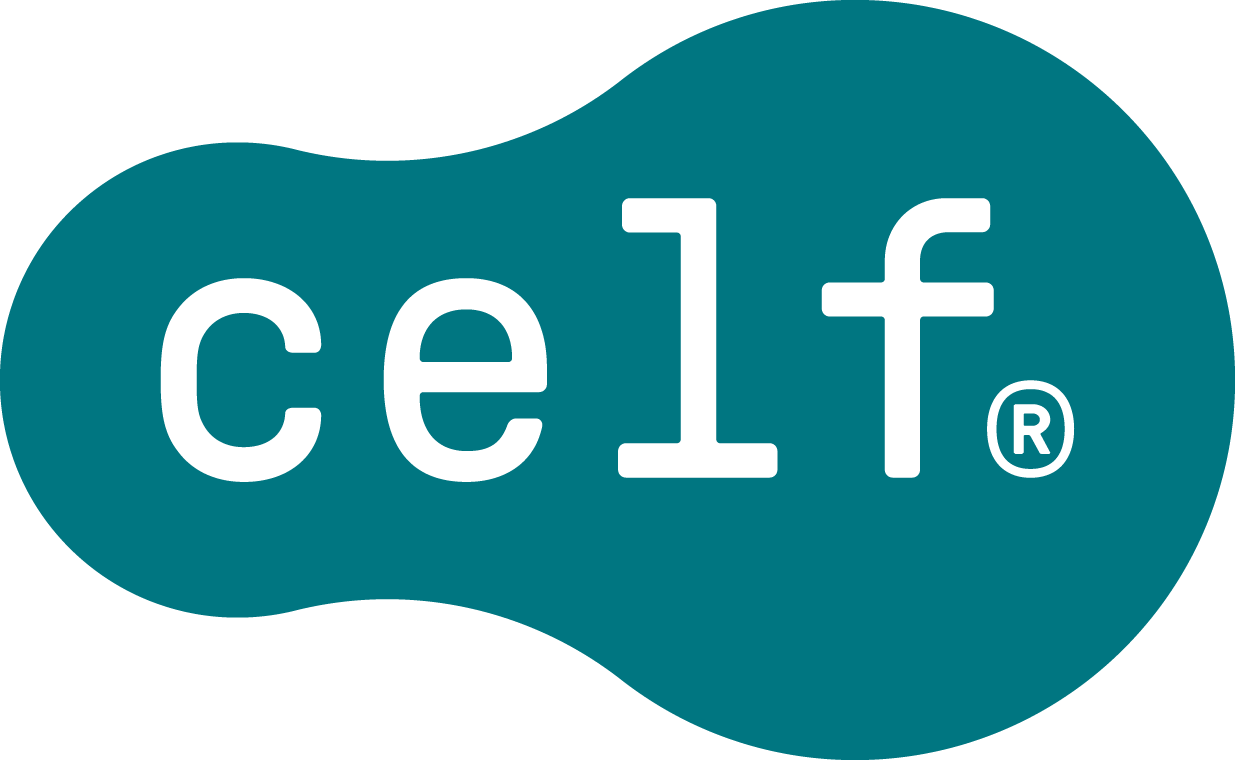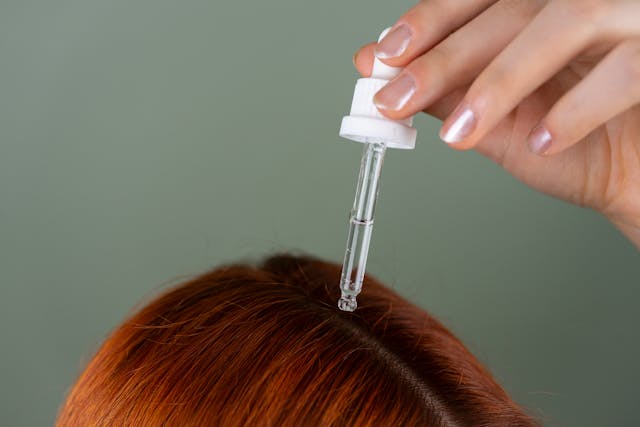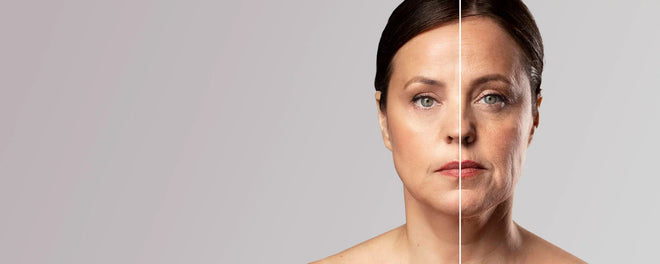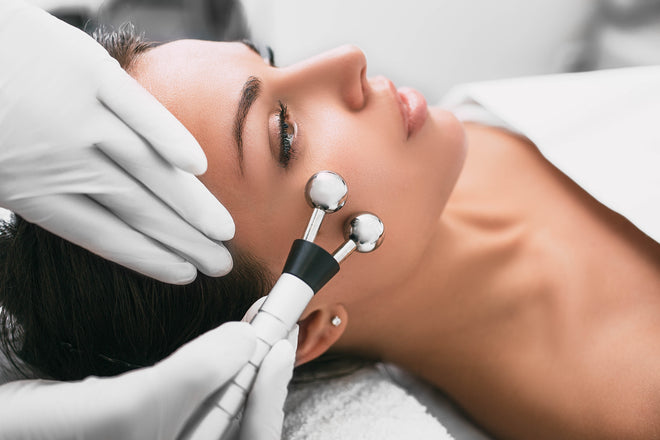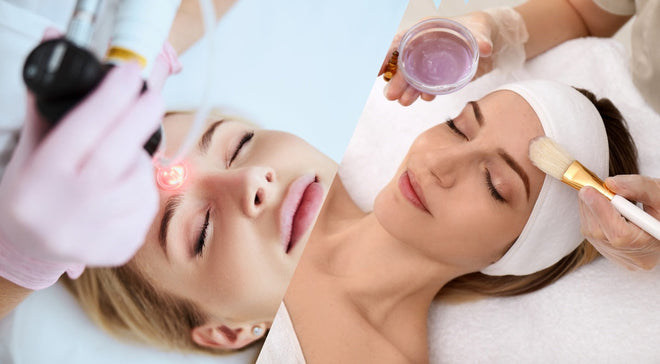Oral vs. Topical Minoxidil: Which One’s Better?
Table of Contents
Oral Minoxidil vs. Topical Minoxidil: What is Going to Be Best For You?
Oral Minoxidil vs. Topical Minoxidil: Understanding the Best Option for Your Hair Growth Facing the dilemma of which hair loss treatment to try can be overwhelming. Treatments are changing and evolving rapidly. Knowing the science behind these products is an important part of making informed choices. Two of the leaders in hair loss treatments, oral and topical minoxidil, share the same active ingredient, but they differ significantly in their mode of delivery, efficacy, and safety. At CELF, we pride ourselves on delivering science-based beauty. We believe that giving you the right, clear and trustworthy information, will allow you to take control of your beauty and wellness journey. Let's take a look at a comparison of oral & topical minoxidil.
Quick Comparison Chart: Oral vs Topical Minoxidil
|
Feature |
Oral Minoxidil |
Topical Minoxidil |
|
Efficacy |
Potentially longer-lasting, systemic efficacy |
Effective, particularly if started at early stages |
|
Application |
Daily pill |
Applied to the scalp (foam/liquid) |
|
Time to Results |
Typically 3–6 months |
The usual timeframe is 4–6 months |
|
Common Side Effects |
Systemic (e.g., heart rate changes, fluid retention, hair growth on the body and face) |
Localized (scalp irritation, initial shedding, dryness) |
|
Ease of Use |
Easy |
Daily and consistent |
|
Cost |
Varies, usually a prescription |
Generally accessible for purchase over-the-counter (OTC) |
|
FDA Approved for Hair Loss |
No (‘off-label’ use) |
Yes (approved for androgenetic alopecia) |
Disclaimer: Results and side effects will vary on an individual basis. It is important to talk to a healthcare provider. At CELF, we understand that empowering you with information based on the latest science will help you navigate your beauty journey.
Learn more about our innovations here: https://celf.beauty/
Why Compare Oral Versus Topical Minoxidil Now?
Hair loss affects millions of people. The American Academy of Dermatology Association estimates that hair loss affects more than 50 million men and women in the US. For the longest time, topical minoxidil has been the standard, and easily accessible, treatment. But, as low-dose oral minoxidil becomes a more widely accepted possibility for patients who find topical minoxidil inconvenient or ineffective, understanding the differences in both dosage forms will allow patients to have discussions with their dermatologist about the next suitable treatment choice. Knowing the differences between topical and oral minoxidil can change the treatment experience from unsureness to knowledge. Selecting an effective treatment is a big part of coping with hair loss and regaining self-esteem. Allow science to lead you. CELF believes innovation and empowerment are a combined journey—maximize your best self through science-based beauty: https://celf.beauty/
Section 1: What Is Minoxidil?
Minoxidil's role in hair loss treatment was completely accidental. Minoxidil was originally developed and approved in the 1970s as an oral medication (Loniten) to treat severe high blood pressure. While prescribing Loniten, physicians noted a side effect of the drug: hypertrichosis, or an undesired increase in hair growth. This led researchers to investigate the potential for treating baldness, and eventually, they found that applying minoxidil to the scalp would induce local hair growth, ultimately leading to the FDA-approved topical minoxidil (more commonly known as Rogaine) for use in male pattern baldness in 1988, and later, female pattern hair loss. To quote Healthline, ‘Minoxidil is a vasodilator; it widens blood vessels.’ Perhaps the reason minoxidil works in the scalp is that it increases blood flow to hair follicles, encouraging the revival of hair follicles and increasing the length of the hair growth cycle.
Source: https://www.healthline.com/health/minoxidil-oral-tablet
Section 2: Understanding Oral Minoxidil for Hair Loss
Oral minoxidil has a systemic action. In pill form, minoxidil enters the bloodstream and is distributed throughout the body to the hair follicles from the inside out; this is one reason it is thought to be potentially more powerful, especially for widespread hair loss. It is important to understand that this dosage is significantly less than the dosage for hypertension, usually 0.25– 5 mg a day for hair loss, versus 10 mg or more for blood pressure, according to dermatological research studies, such as the Journal of the American Academy of Dermatology. This lower dose allows minoxidil to provide maximum hair benefits with minimum systemic side effects. Oral minoxidil is a treatment that is often considered in patients with extensive pattern hair loss, patients with an inadequate response to topical treatments, or patients who are unable to tolerate topical therapies for hair loss due to serious scalp irritation. Minoxidil for hair loss is often prescribed off-label in many parts of the world since it has not been specifically approved for hair loss by the Food and Drug Administration, but this may change as there is more clinical evidence supporting its use.
Source: https://www.jaad.org/article/S0190-9622(21)00418-7/abstract
Section 3: Learning About Topical Minoxidil
Topical minoxidil is the formulation that is placed on the scalp - the area of thinning hair. Topical minoxidil is sold over the counter as a 2% or 5% liquid solution or foam. Generally speaking, the 5% formulation tends to be stronger and is, therefore, the preferred option for both men and women. The most recognised benefit of topical minoxidil is its localized application to the target area. Topical minoxidil focuses on the scalp only, so systemic absorption is decreased. Therefore, systemic side effects are reduced. Local-regional therapy is why topical minoxidil received FDA approval specifically for androgenetic alopecia (pattern hair loss). Mayo Clinic states it is important to apply topical minoxidil daily or twice daily for best results. The challenge with topical minoxidil is that it is dependent on the right application and absorption of the product through the scalp skin, which can complicate the therapy. Client feedback on topical minoxidil commonly includes reports of the inconvenience of the therapy, messy application process, and local scalp irritation (e.g., itching, flaking).
Source: Mayo Clinic information on topical minoxidil.
Section 4: Key Differences: Oral vs Topical Minoxidil in Detail
|
Aspect |
Oral Minoxidil |
Topical Minoxidil |
|
Effectiveness |
Systemic minoxidil may provide uniform action to all follicles and greater effectiveness, especially if hair loss is extensive or stubborn. |
Topical minoxidil is an effective, targeted action that can be effective for a specific percentage of people, especially early/moderate hair loss. Results will vary based on the degree of consistent application and absorption by the scalp. |
|
Onset of Results |
Visible results are often noted 3–6 months in with oral minoxidil; the pathway of systemically acting minoxidil may be slightly faster than topical for some individuals. |
Visible improvement typically takes 4–6 months or longer - heavily dependent on diligent, consistent use. |
|
Side Effects Profile |
Higher risk of systemic effects: fluid retention (edema), increased heart rate, lightheadedness, and unwanted body/facial hair (hypertrichosis) - requires medical oversight. |
Primarily localized side effects: itching, dryness, redness, flaking - initial shedding phase is likely during the initial application (‘dread shed’) - has a greater potential for limited systemic side effects. |
|
Ease of Use / Compliance |
Oral minoxidil is incredibly easy to use - a single daily pill is easily factored into even the busiest schedule, making it less likely for some to lose compliance. |
Topical minoxidil requires a disciplined daily (often twice daily) application, which for many individuals is disruptive to travel and everyday life (could damage hair do). It can be tiring, messy, and sometimes compromise your hairstyle. |
|
Cost & Accessibility |
Requires a prescription. Cost can vary; if you are using it off-label, it may impact insurance coverage and increase out-of-pocket payments. |
Widely available OTC. Generics are often cheap; making it a better option for many. |
|
FDA Approval for Hair Loss |
No (Using ‘off-label’ confirmed by emerging clinical data). |
Yes (Approved for both male and female pattern hair loss.) |
At times, you may have to balance possible efficacy with convenience and safety. Oral minoxidil is easier and probably the best option for extensive loss, but with it comes medical management due to systemic risks. Topical minoxidil is considered an approved and safe starting point for many patients, particularly for those with localized thinning or higher-risk patients, but it requires additional effort to apply. Utilising a personalised, science-based approach translates to better beauty outcomes — which is exactly what CELF enables.
Learn about CELF'S approach towards innovation here: https://celf.beauty/
Section 5: Additional Context on Side Effects and Safety
Safety is of foremost importance when considering any treatment. Oral Minoxidil is a systemic treatment, so side effects can occur apart from the scalp. Common side effects associated with low-dose oral minoxidil noted by sources like the Cleveland Clinic include:
-
Hypertrichosis: Unwanted increase of hair on face, arms, back, etc. (dose-dependent).
-
Edema: Swelling due to fluid retention, usually in lower legs/ankles.
-
Cardiovascular: Lightheadedness, tachycardia (faster than normal heart rate), or a temporary reduction in blood pressure when standing up.
-
Initial shedding: Sometimes an initial increase in hair fall can be detected. Because of these systemic effects, minoxidil (oral) should only be used and monitored under the supervision of a qualified healthcare provider.
Topical Minoxidil side effects are generally regionally limited to the application area:
-
Scalp Issues: itching, dryness, flaking, and redness (occasionally may be related to other ingredients such as propylene glycol; may be tolerated better as foam).
-
Initial shedding: It is common to initially have shedding (2–8 weeks) as follicles revert to a new cycle.
-
Accidental growth: Light facial hair if minoxidil drips onto the face. Systemic side effects are rare due to low absorption unless overutilised or used on broken skin.
Source: Cleveland Clinic - Minoxidil for Hair Growth
Section 6: Is One Form Faster Than the Other?
In either event, be patient. Generally, you can expect observable effects usually between 3–6 months, with the best outcomes usually in 1 year or longer. Some people using oral minoxidil may experience somewhat faster or more symmetrical initial outcomes since oral minoxidil is systemic, but the key for each is compliance. Topical results depend entirely on consistent, correct application, and oral results depend on taking the pill every day as prescribed. If you stop either treatment, it is likely you will lose what you have gained.
Constant routine and scientifically substantiated technologies are the keys to actual change; experience the next generation of beauty today with CELF: https://celf.beauty/
Section 7: Who Is a Good Candidate for Oral vs. Topical Minoxidil?
The biggest factor is finding the treatment that is the right fit for the person. Examples where oral minoxidil may be a good option:
-
Individuals who experience a greater degree of hair loss;
-
They are non-responders to topical drugs;
-
They were bothered by side effects or the inconvenience of topical drug application;
-
They are determined to be a good candidate for systemic medication, and they are under the supervision of a dermatologist.
Examples of when topical minoxidil is often a good choice:
-
A person is earlier in the process of experiencing the effects of hair loss;
-
An FDA-approved option is desired;
-
Systemic side effects are a concern;
-
A health condition would contraindicate oral use. Empowerment: ‘The journey of hair growth is very personal to you’. Discussing your individual situation, health history, and expectations for treatment with a dermatologist is the first step to developing the best and safest choice for you.
Section 8: User Experiences and Study Data
Meta-analysis or aggregate data from studies (e.g., systematic reviews available on PubMed Central (NCBI)) often show high patient satisfaction with low-dose oral minoxidil in regard to hair regrowth, as many observe notable improvement(s); many reported effective treatment. However, those studies also continue to show the common side effect observed: hypertrichosis (excessive hair growth). These studies even point to the need to have someone medically supervising the treatment. Meanwhile, users of topical agents report generally steady albeit not as pronounced improvement, with scalp irritation and patient compliance being the two greatest challenges. Overall, the inclination is to think oral minoxidil may provide some patients with greater efficacy, but with definite trade-offs in side effects and required supervision.
Source: https://www.ncbi.nlm.nih.gov/pmc/articles/PMC9519868/
Section 9: Final Thoughts: The Decision
Choosing either oral or topical minoxidil treatment includes many considerations:
-
If you value convenience and have significant hair loss (well-managed with the help of a doctor): Discuss low-dose oral minoxidil.
-
If you prefer an FDA-approved localised treatment with fewer systemic effects: Topical minoxidil is probably the best choice to begin.
-
If you have a lot of scalp irritation from topical liquids: Change to topical foam or talk about oral options.
-
If you have cardiovascular or other health concerns: A topical is generally safer, but always consult your doctor first. ‘Your hair growth journey is unique to you’. Plan with your dermatologist to figure out the approach that would best balance effectiveness, safety, and your lifestyle. Are you ready to start your beauty journey with a scientific breakthrough? At CELF Beauty, we simply believe in using proven, cutting-edge methods in order to achieve the most beautiful version of yourself.
Learn more about our skin and hair health advancements, here: https://celf.beauty/
Closing Section: CELF's Innovative Path to Beauty and Wellness
Pharmaceuticals such as minoxidil are an important aspect of addressing certain needs such as hair loss, but finding beauty and wellness solutions offers much more. Scientific opportunities are constantly discovering new ways to advance our body's innate regenerative function. CELF is focused on what is possible through science and technology to consider skin health – in a new way. For example, CELF Microvibration Therapy uses micro-vibration from the Oral-B iO toothbrush head. This gentle, low-frequency technology helps wake up your scalp—stimulating the cells that support healthy hair growth without any needles or discomfort. By boosting circulation and delivering nutrients more effectively to the roots, it helps your hair absorb key serums like biotin. The result? Stronger, thicker strands over time. It’s a simple, non-invasive way to support fuller hair—offering a smarter, science-backed alternative to traditional options like oral minoxidil.
If you're interested in finding out more, explore CELF's website and learn more about how microvibration technology can make a difference and amplify your beauty from within! https://celf.beauty/.
FAQs
1. Which form of minoxidil is most effective—oral or topical?
Studies suggest oral minoxidil may be more effective for some individuals, especially those who didn’t respond well to topical treatments. However, it also carries a higher risk of side effects, so it’s important to consult a healthcare provider before switching.
2. Will oral minoxidil work if topical minoxidil doesn’t?
Yes, in some cases, oral minoxidil works when topical fails, especially if the issue lies in poor absorption or skin irritation from the topical form. Oral delivery bypasses the skin barrier and may offer more systemic effects.
3. What is the best method for applying minoxidil for hair growth?
The best method depends on individual needs. Topical minoxidil is a go-to for mild hair thinning with fewer systemic side effects. Oral minoxidil may be more potent but requires close monitoring due to potential cardiovascular impacts.
4. Will I lose hair when switching from topical to oral minoxidil?
Some users may experience temporary shedding during the transition due to the hair growth cycle resetting. This is usually short-term and followed by regrowth if oral minoxidil is effective for you.
5. Can I use oral and topical minoxidil at the same time?
Yes, under medical supervision, some people combine oral and topical minoxidil for enhanced results. However, this approach may increase the risk of side effects like dizziness or excessive hair growth in unintended areas.
6. What are the side effects of oral vs. topical minoxidil?
Topical minoxidil may cause scalp irritation, dryness, or flaking, while oral minoxidil may lead to low blood pressure, fluid retention, or increased body hair growth. Oral use should always be monitored by a doctor.
7. Is oral minoxidil safe for women?
Low doses of oral minoxidil (e.g., 0.25–1.25 mg/day) have been used successfully in women, especially for female-pattern hair loss. However, side effects like facial hair growth are more common in women and must be considered.
8. Oral minoxidil vs. finasteride: Which is better?
Oral minoxidil stimulates hair growth, while finasteride prevents hair loss by blocking DHT. For best results, they’re often used together, but finasteride is not typically recommended for women.
